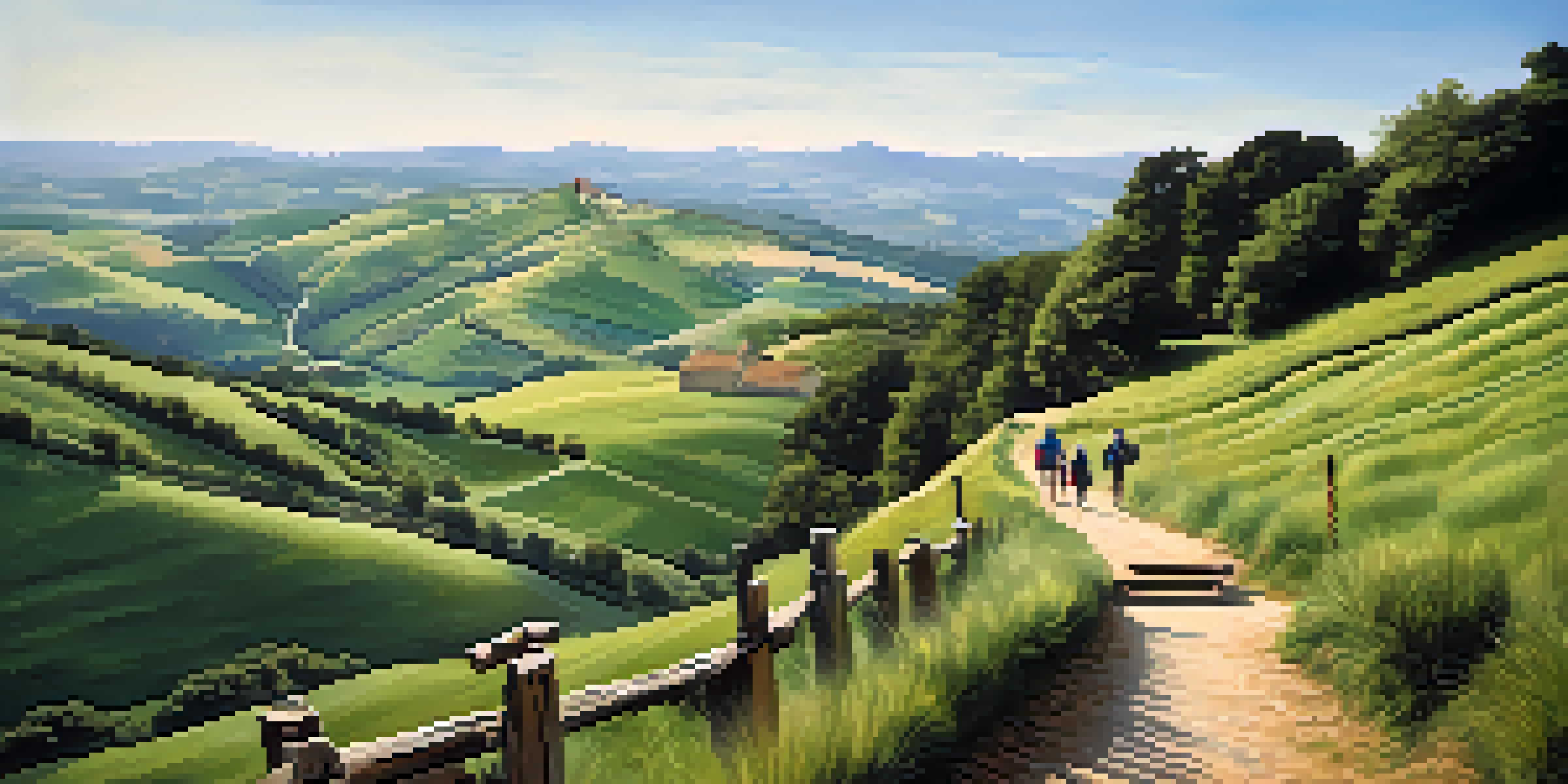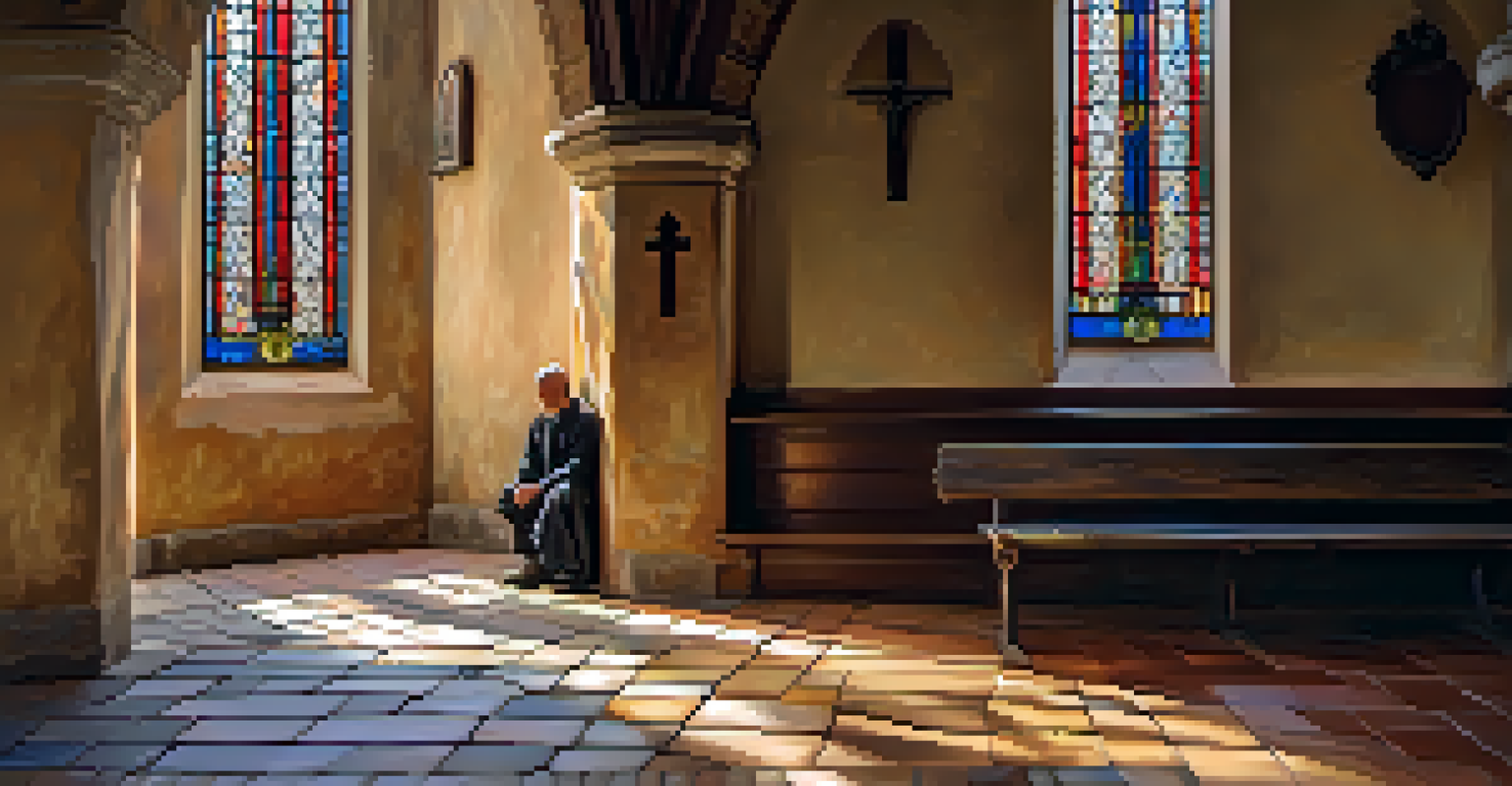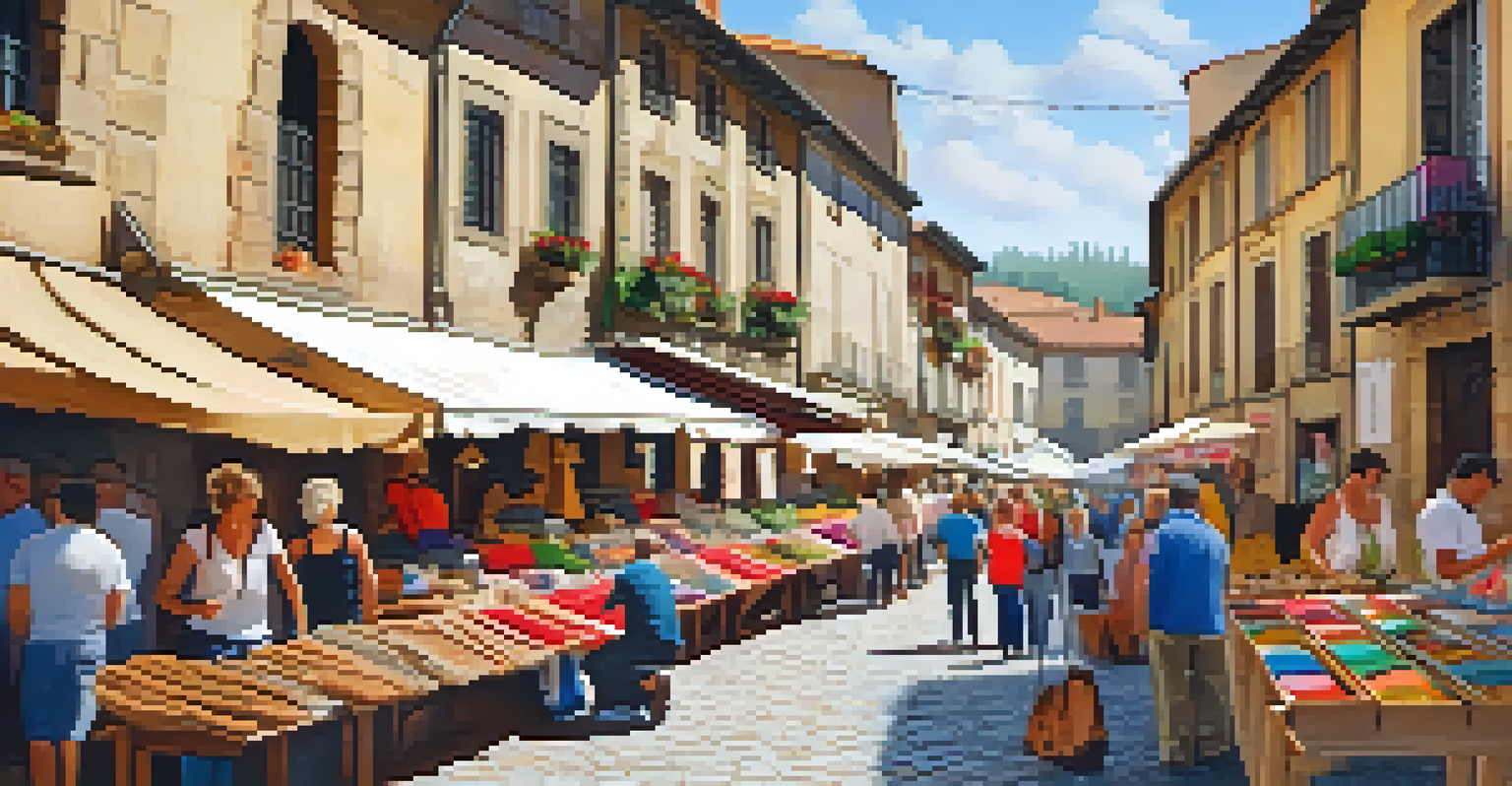Exploring the Camino de Santiago: A Pilgrim's Journey in Spain

What is the Camino de Santiago and Its Significance?
The Camino de Santiago, or the Way of St. James, is a historic pilgrimage route in Spain that leads to the shrine of the apostle Saint James. This journey has attracted pilgrims from all over the world for over a thousand years, offering both spiritual and physical challenges. Beyond its religious significance, the Camino is a path of cultural exchange, connecting diverse communities and traditions.
The journey of a thousand miles begins with one step.
Each year, thousands of walkers embark on this journey, seeking various forms of enlightenment, whether spiritual, personal, or simply the joy of nature. The route stretches across various terrains, showcasing the stunning landscapes of northern Spain, from rolling hills to ancient forests. This diversity not only enriches the experience but also provides a unique opportunity to connect with nature and oneself.
For many, the Camino de Santiago is a rite of passage, symbolizing a journey of self-discovery and reflection. As you walk, you can't help but feel a sense of camaraderie with fellow pilgrims, each with their own stories and motivations. This shared experience fosters a profound connection, making the journey even more meaningful.
Choosing the Right Route for Your Journey
The Camino de Santiago offers several routes, with the most popular being the Camino Francés, which stretches approximately 780 kilometers from the French border to Santiago de Compostela. Each route has its own unique charm and challenges, catering to various preferences and fitness levels. Whether you’re seeking a leisurely stroll or a more rigorous trek, there’s a path for everyone.

Other notable routes include the Camino Portugués, which runs from Portugal, and the Camino del Norte, characterized by its stunning coastal views. Each route provides a different perspective and cultural experience, ensuring that no two journeys are alike. Choosing the right route is essential to tailoring your experience to fit your desires and capabilities.
The Camino as a Journey of Discovery
The Camino de Santiago offers a unique opportunity for self-discovery, fostering personal growth and reflection through its picturesque landscapes and shared experiences with fellow pilgrims.
Before deciding, consider factors such as distance, difficulty, and the type of scenery you wish to experience. Researching each route and speaking to fellow pilgrims can provide valuable insights. Ultimately, the best choice is the one that resonates with your personal journey.
Packing Essentials for the Camino
Packing for the Camino de Santiago can feel daunting, but keeping it simple is key. Focus on essentials that make your journey comfortable and enjoyable. A good pair of hiking boots, breathable clothing, and a lightweight backpack are must-haves, along with a reusable water bottle to stay hydrated.
Not all those who wander are lost.
Don't forget to pack a first-aid kit for minor injuries and blisters, which are common on long walks. Additionally, including personal items like a journal can enhance your experience, allowing you to document your thoughts and feelings along the way. This reflection can be immensely rewarding as you progress through your journey.
Lastly, remember to pack light! The Camino is about simplicity and connection, so carrying only what you need will make the journey more enjoyable. Consider leaving room in your backpack for souvenirs or mementos you may acquire along the way.
Understanding the Cultural Heritage Along the Camino
The Camino de Santiago is steeped in rich history and cultural heritage, with countless towns and landmarks along the way. Each stop offers a glimpse into Spain's past, from ancient churches and monasteries to local festivals that celebrate the region's traditions. Exploring these sites adds depth to your pilgrimage and enhances your understanding of the local culture.
As you walk, you may encounter local artisans showcasing their crafts, from handmade jewelry to traditional textiles. Interacting with these artisans allows you to appreciate the skills and stories behind their work. This cultural exchange enriches your journey, making it more than just a physical trek.
Cultural Richness Along the Route
As you walk the Camino, you encounter diverse cultural heritage, local artisans, and traditions that enrich your understanding of Spain and create lasting memories.
Moreover, the Camino is also a melting pot of cultures, attracting pilgrims from around the globe. Sharing meals, stories, and experiences with fellow travelers fosters a sense of global community and understanding. Embracing these cultural encounters can turn your pilgrimage into a transformative experience.
The Spiritual Aspects of the Camino
While many embark on the Camino for physical reasons, the spiritual aspect is a significant draw for many pilgrims. The act of walking can serve as a form of meditation, allowing individuals to connect with their inner selves and reflect on their lives. Each step taken can bring clarity and a sense of peace, making the journey both personal and transformative.
Pilgrims often find solace in the simplicity of walking and the opportunity to disconnect from daily distractions. Many choose to engage in personal rituals, such as lighting a candle in a church or pausing for quiet reflection in nature. These moments of introspection can offer profound insights and emotional healing.
Additionally, the Camino is dotted with various spiritual sites that invite contemplation. Whether it's a historic cathedral or a tranquil chapel, these spaces encourage pilgrims to pause and reflect on their journey, both physically and spiritually. Embracing this aspect can deepen your experience and offer new perspectives.
Meeting Fellow Pilgrims on the Camino
One of the most rewarding aspects of the Camino de Santiago is the camaraderie shared among pilgrims. As you traverse the paths, you'll encounter other travelers from all walks of life, each with their own motivations and stories. These connections often lead to friendships that can last well beyond the journey.
Sharing meals, stories, and experiences creates a sense of community that enriches the pilgrimage. Whether it's offering words of encouragement during a tough stretch or sharing laughter over a communal meal, these moments forge bonds that can be incredibly fulfilling. It’s not uncommon to find yourself forming a makeshift family on the trail.
Building Connections with Pilgrims
The camaraderie among pilgrims enhances the journey, as shared stories and experiences create a sense of community and lasting friendships along the trail.
Moreover, engaging with fellow pilgrims can provide valuable advice and insights that enhance your journey. From tips on the best accommodations to sharing personal reflections, these interactions often make the experience even more memorable. Embrace the opportunity to connect; after all, the Camino is as much about the journey with others as it is about the path itself.
Reflecting on Your Journey: The End of the Camino
Reaching Santiago de Compostela is a significant milestone, signaling the end of your Camino journey. This moment is often filled with mixed emotions—joy, relief, and a touch of sadness as you leave the trail behind. Many pilgrims take time to reflect on their experiences, recognizing the growth and insights gained along the way.
The iconic Cathedral of Santiago, where Saint James is said to be buried, serves as a fitting conclusion to this pilgrimage. It’s a place for celebration and gratitude, allowing you to honor the journey and the people you met. Many choose to participate in a mass or ceremony, marking the completion of their pilgrimage.

As you return to your daily life, the lessons learned and connections made during your journey often stay with you. The Camino becomes a part of your narrative, shaping how you see the world and yourself. Embracing this transformation can lead to lasting change long after the journey ends.